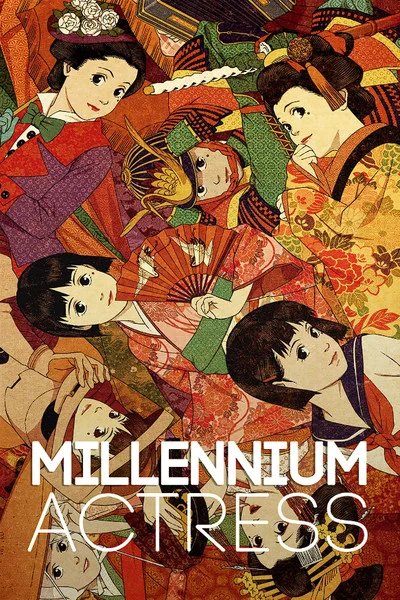We’re in between conventions right now, so it’s a great time to tackle another item from the backlog. I’ve just returned from Washington DC and have enough time to transition back to my usual timezone before heading to New York City. Reflecting on the fleeting nature of time, let’s dive into a movie that embodies this concept and focuses on one woman’s intense artistic ambition.

Millennium Actress
Why Is It Important?
It’s a bit disheartening to acknowledge that many modern anime fans might not be familiar with Satoshi Kon. Kon was a manga artist, scriptwriter, and director whose work influenced prominent figures like Darren Aronofsky and Guillermo del Toro, though Kon himself wasn’t particularly impressed with Aronofsky’s “homages” to his work. Kon’s career was closely tied with other talented creators; he worked as an assistant to Akira creator Katsuhiro Ōtomo, contributed to Mamoru Oshii’s Patlabor 2, and wrote the Magnetic Rose segment of Memories before making his directorial debut with Perfect Blue. Many of his notable works were produced at Madhouse during Masao Maruyama’s tenure.
Perfect Blue was groundbreaking, offering a dark exploration of psychological distress through the lens of a pop idol exploited in 1990s Japan. Its critical success helped Kon secure more opportunities, despite the distribution company’s eventual closure. His second film, Millennium Actress, built upon the narrative techniques of Perfect Blue but with a distinct tone and outcome. It was one of only five films he directed before his untimely death from pancreatic cancer in 2010, just shy of his 47th birthday.
Does It Live Up to Its Reputation?
Absolutely. I regret not having watched Millennium Actress sooner. The film takes a narrative approach similar to Perfect Blue but with a different twist. Instead of focusing on an unreliable narrator grappling with a fractured sense of self, Millennium Actress follows Chiyoko, an aging actress who recounts her life through episodes from her acting career. On a surface level, her story revolves around her obsession with a political defector from the Sino-Japanese War and her lifelong quest to return a key that represents “the most important thing.”
A possible critique might be the idea that a single encounter could become the driving force of a person’s entire life. However, this criticism only applies if you view the film superficially. As the story progresses, it becomes clear that Chiyoko’s pursuit is less about romantic love and more about chasing an ideal. Her relentless passion keeps her youthful, while losing one’s idealism often leads to a loss of vitality. Hope is about dreaming of a better future.
The film’s celebration of cinema and storytelling adds another layer of richness. Throughout Chiyoko’s journey, Genya Tachibana, a documentarian and former production assistant, serves as both an observer and a stand-in for the audience. He becomes a part of Chiyoko’s re-enactments, reflecting how we often envision ourselves within the narratives of our favorite films. Tachibana’s role highlights how we connect with the dramatic moments of an artist’s life and how we can become deeply immersed in their stories.
Watch It or Skip It?
Watch it. Millennium Actress is a film that celebrates the love of movies, the hope for a better future amidst adversity, breaking free from societal norms to follow one’s dreams, and the total commitment to passion and love.

